The Olympics often renew interest in many sports, leading to high demand from motivated athletes and fans hoping to try the game—and water polo is no exception. Although the average water polo player doesn’t need much gear (especially compared to hockey and lacrosse players), they still require a few essentials to get the game going.
This article discusses five pieces of water polo equipment businesses can sell to potential customers during the Olympic buzz.
Table of Contents
What’s the state of the water polo equipment market?
Water polo equipment: 5 options to sell ahead of the Olympics
5 things to avoid when marketing water polo equipment
Wrapping up
What’s the state of the water polo equipment market?
Water polo has been witnessing a popularity surge, especially in events like the Olympics, Asian Games, and Commonwealth, leading to rising participation and increased demand for the water polo equipment market. According to the Imarcgroup, the water polo equipment market readjusted to US$ 3.6 billion in 2024, with predictions stating it will hit US$ 5.1 billion in 2032.
The report also attributes the market’s success to the rising popularity of water sports and the availability of inexpensive products. The Imarcgroup states that North America was the largest water polo equipment market due to easy product availability and the sport’s rising popularity.
Water polo equipment: 5 options to sell ahead of the Olympics
Water polo balls
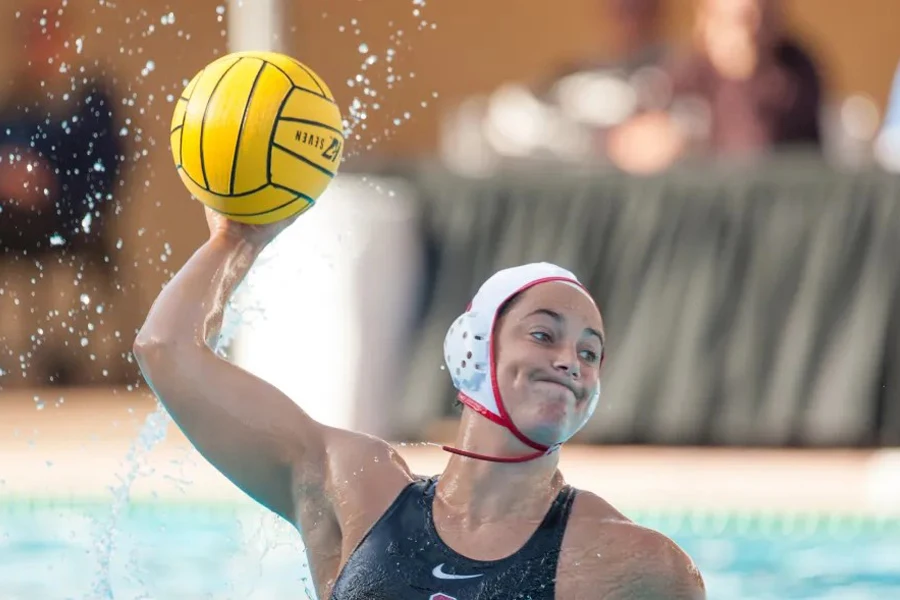
Ball games are never complete without the ball—and water polo is no different. However, water polo balls come with different features consumers can’t find in other balls. For instance, most water polo balls are bright yellow (or other vibrant hues), increasing their visibility in the pool and making it easier for players to follow as they move around.
Water polo balls (9,900 searches in May 2024) also have rough textures to increase player grip and prevent slipping during play. Additionally, they come in two sizes: five and four. Size five (68 to 71 cm in circumference) balls are a favorite for men’s matches, while smaller size four options are more common in women’s matches (accounting for their generally smaller hands). Retailers may also stock even smaller sizes for kids and youth.
Modern water polo balls have undergone interesting changes to make gameplay easier. Today, manufacturers make most water polo balls from material combinations, including rubber foam, synthetic materials, and other materials with more chlorine resistance. The ball’s weight has also decreased significantly, with modern options weighing only 5 ounces.
Suits

If consumers want to spend time playing water polo, they will need swimsuits. They can’t use sports bras, swim trunks, board shorts, and similar substitutes. Instead, players need something comfortably snug with enough freedom for twisting, turning, and stretching throughout the game. Additionally, men and women require different swimsuits.
Women
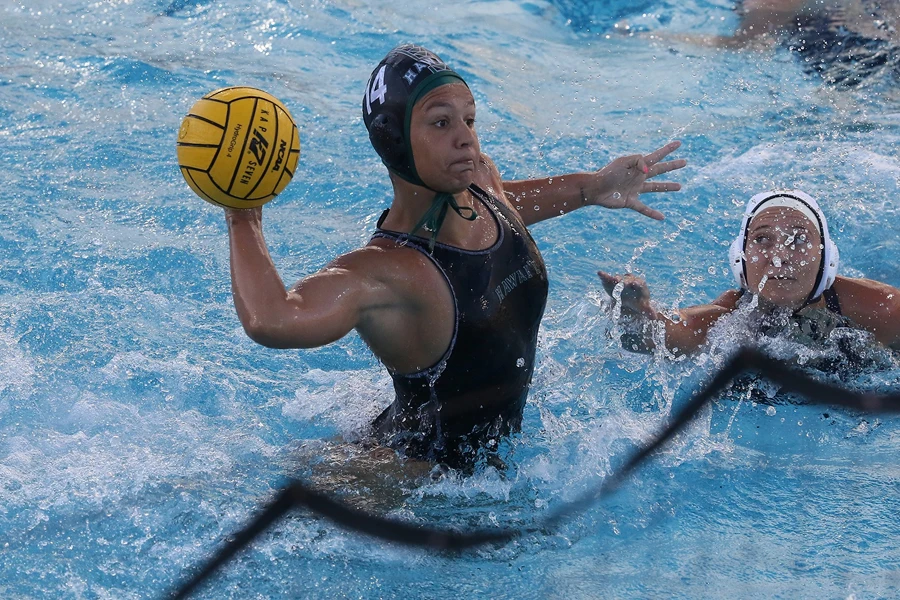
Women’s water polo suits (201,000 searches in May 2024) are one-pieces that cover their entire torso. Their designs minimize underwater drag while giving defenders fewer options to grab. Some water polo suits may also have rubber or latex sections to reduce the chances of grabbing even more. But for practice, most players use lap swimming suits for training and play in young/beginner water polo games.
Men
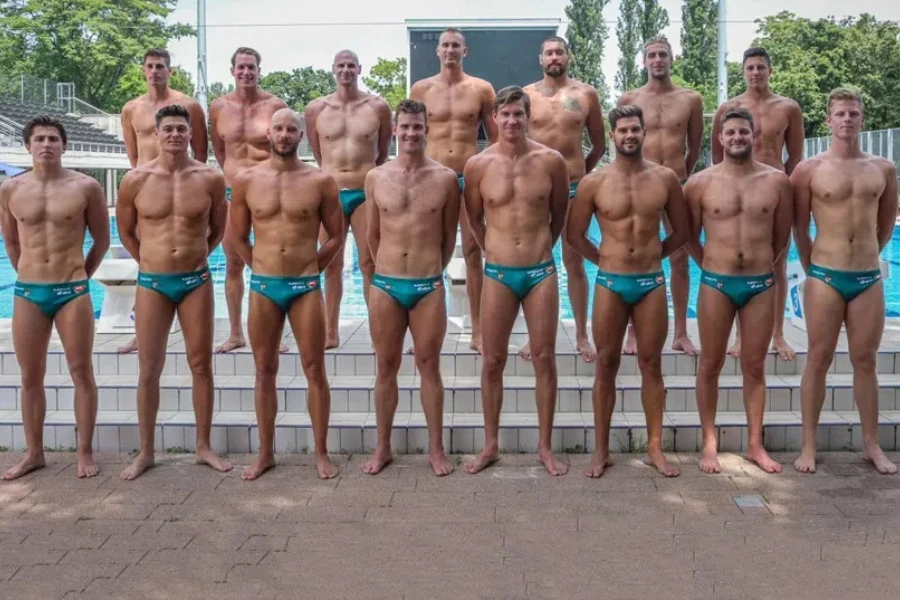
On the other hand, men use swimming briefs (450,000 searches in May 2024) for their water polo games. These briefs (or Speedos) are stretchy and tight-fitting enough to allow unrestricted water movement and only cover the lower torso (typically the hips and buttocks). When training, some men prefer slightly baggier speedos, square-leg sits, and swim briefs. However, they typically avoid longer lap swimming suits, board shorts, and swim trunks because of the extra drag.
Swim and water polo caps
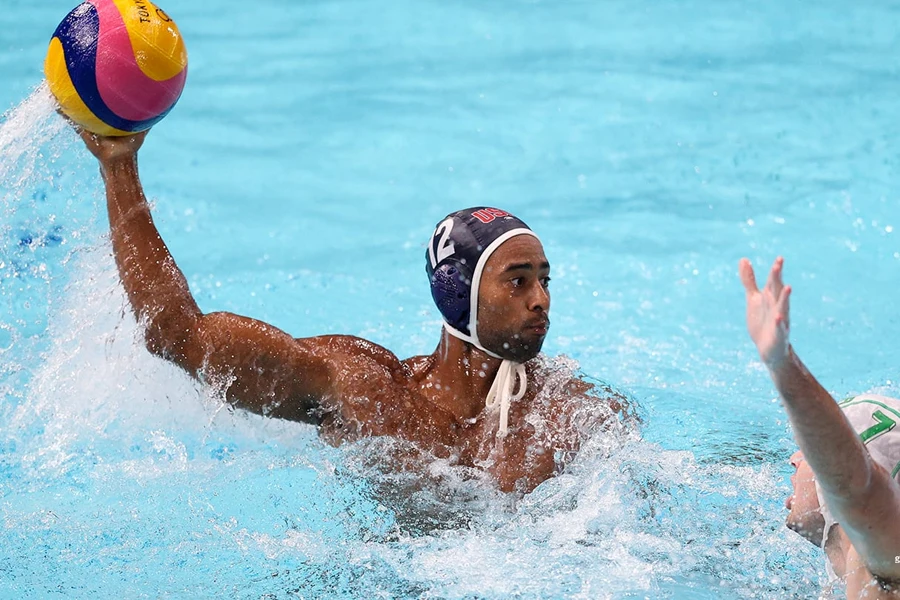
Consumers with hair past their shoulders interested in water polo will need swim caps. Whether retailers offer silicon or latex models, they only need these caps to keep the hair off their faces and prevent the opposing team from grabbing. However, competitive players may want light-colored and dark-colored caps for their tournaments and games, as official rules require teams to wear matching caps. According to Google data, swim caps searches increased by 20%, from 90,500 in April to 110,000 in May 2024.
While swim caps are only necessary for players with long hair, water polo caps (3,600 searches in April and May 2024) are the official headgear for the sport. They have plastic ear guards that protect the player’s ears from impact damage and straps that help secure the cap to the head. Water polo caps also serve other important functions.
For starters, water polo caps are an excellent way to distinguish teams—one wears light colors while the other wears dark. Goalkeepers are the only players allowed to wear red caps. Water polo caps are the only way to display the player’s number. However, remember that the target audience for water polo caps is teams or clubs, not the players themselves.
Goals
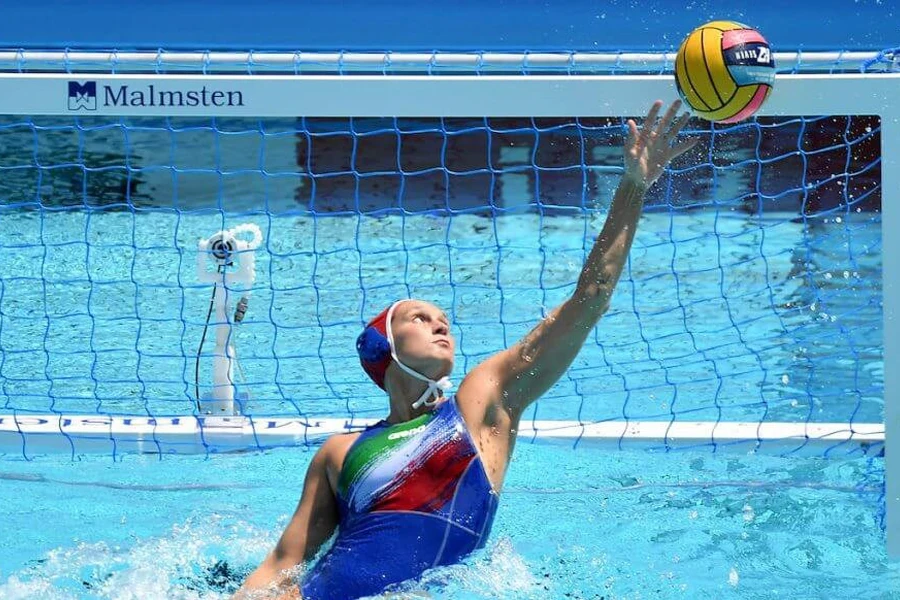
Water polo goals are very different from those in soccer. They come in various designs, from floating models used in official games to recreational goals for target practice. However, the kind of goal consumers and tournaments will need depends on the pool’s setup. Here’s a closer look at the different types of water polo goals and where they work best.
Floating goals
As their name implies, these goals float on the water’s surface with lines or cords keeping them in place. Floating goals are the current standard for major tournaments, but they only work in deep and long pools. Officially, pools with shallow ends (shallower than six feet) and insufficient length can’t use these goals. Regardless, many competitions and games prefer floating goals for their lightweight design and easy installation/storage.
Recreational goals
While not accepted for official games, recreational goals are excellent training tools. These smaller, lighter cages are a great way for water polo and Splashball programs to ease children into the sport. Like floating goals, recreational models are incredibly lightweight and easy to move around. Plus, recreational goals are affordable, making them perfect for informal water polo activities.
Mouth guards
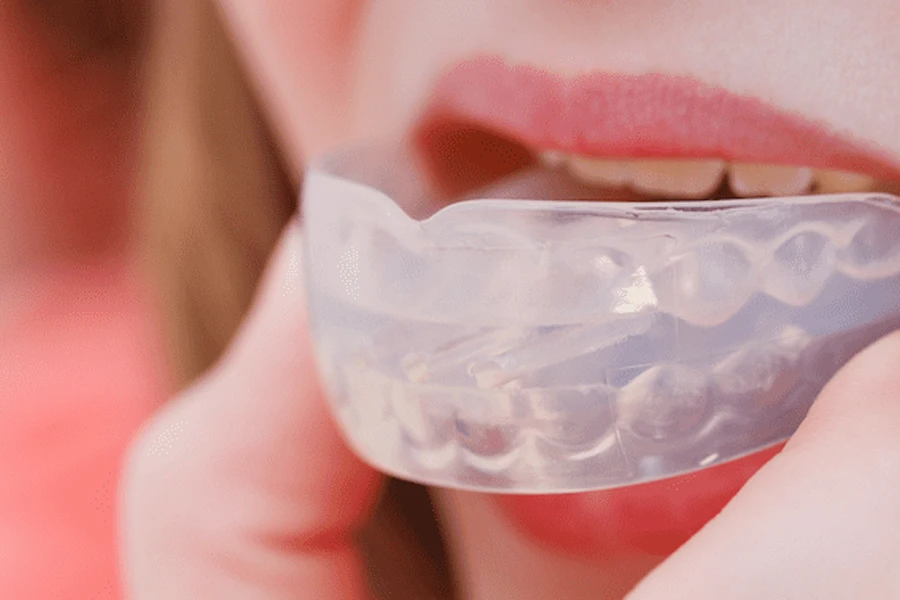
Many water polo players (casual and competitive) prefer wearing mouthguards during games. Kicking feet, rogue balls and flying elbows can easily mess up the player’s mouth. But mouthguards offer a layer of protection from potential damage.
Additionally, players with braces or dental work to protect are perfect target consumers for mouth guards. However, mouthguards make communication difficult, so most people only wear them during scrimmages or games. Mouthguards are quite popular, as Google data shows they raked in 135,000 searches monthly in 2024.
5 things to avoid when marketing water polo equipment
While the Olympics present an excellent opportunity for marketing water polo equipment, there are some pitfalls retailers should avoid to ensure a successful campaign. Here’s a look at five of them below:
Don’t overlook existing fans
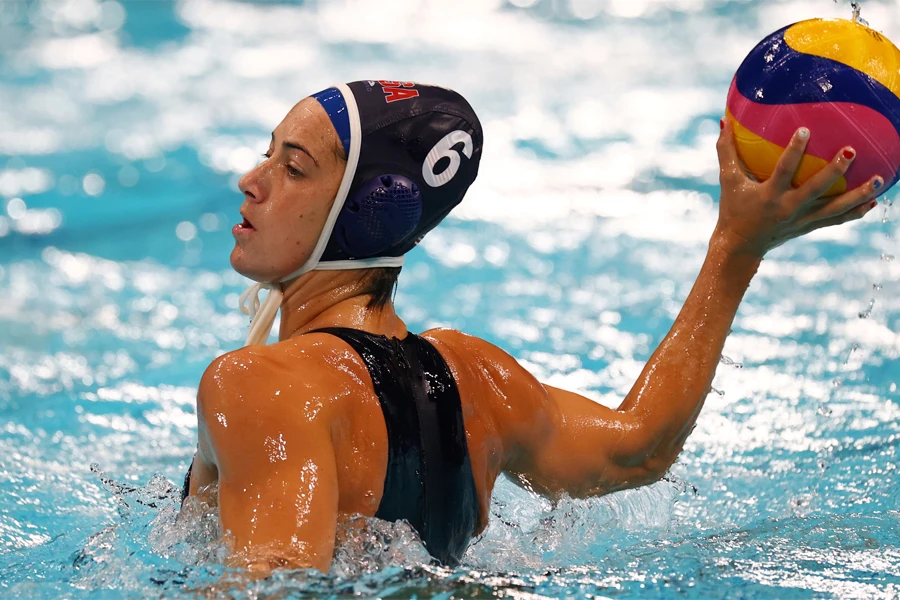
The 2024 Paris Olympics will, no doubt, attract new interest. But businesses must not forget to cater to existing fans and players. Remember to offer exclusive deals or loyalty programs for returning customers to maintain their support and patronage.
Don’t neglect education
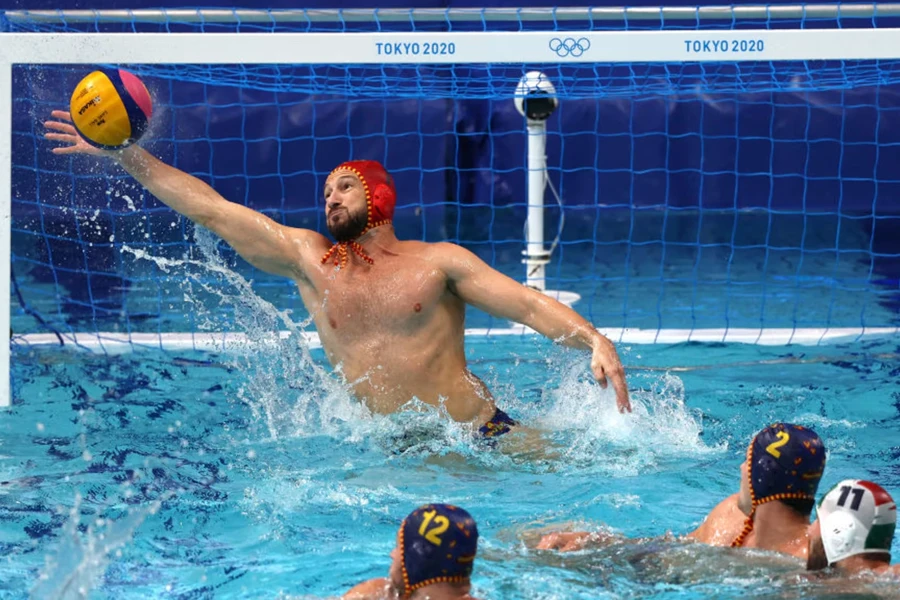
Newcomers will search for water polo equipment but may not be familiar with the sport. Business buyers can provide informative content on water polo, its rules, and an equipment checklist. This strategy can help convert curious viewers into potential customers.
Don’t be too salesy

Put more focus on building excitement and interest in the sport. Avoid overly aggressive sales tactics that can be off-putting. Instead, focus on storytelling, showcasing the benefits of the offered products, and creating a sense of community.
Don’t ignore other channels
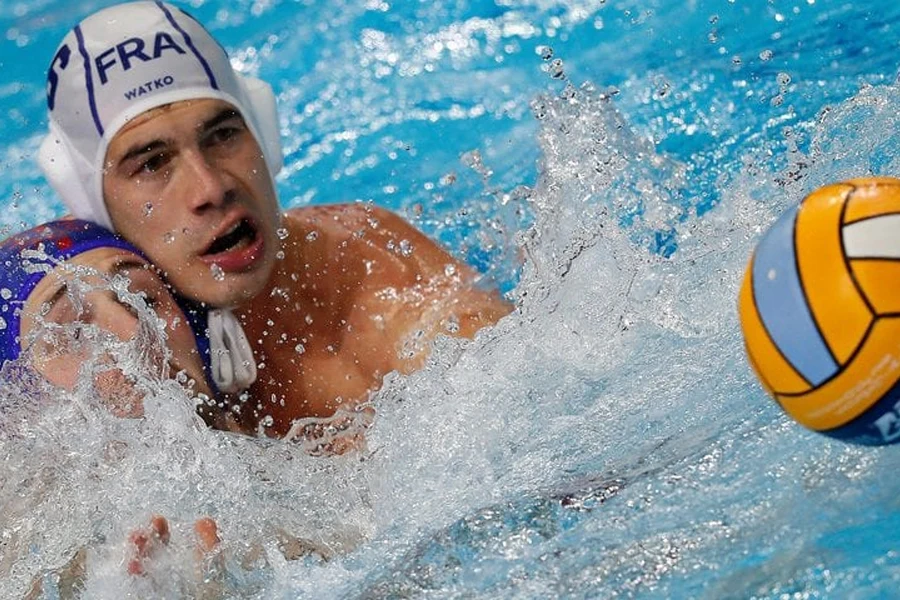
Social media may be vital for advertising, but business buyers must avoid neglecting other marketing channels, like email and local events. Using a multi-channel approach is a great way to maximize reach and impact.
Don’t forget to follow up

The Olympics is short-term, but marketing and sales don’t have to end there. Retailers should create plans to continue engaging with potential customers after the games. Some great ways to do this include offering ongoing promotions, new product releases, or educational content—it’ll keep customers interested.
Wrapping up
Now businesses know more about the few but essential gear consumers need to enjoy water polo, the next step is preparing for the increased demand by stocking up. But remember, other businesses will also compete for attention during the Olympics. For this reason, business buyers must prepare to differentiate themselves with unique offerings, creative marketing campaigns, and excellent customer service.
Also, follow the five tips on what to avoid when marketing water polo equipment to make the most of the 2024 Paris Olympics. Wan’t to read more articles like this? Don’t hesitate to subscribe to Alibaba’s sports category.




